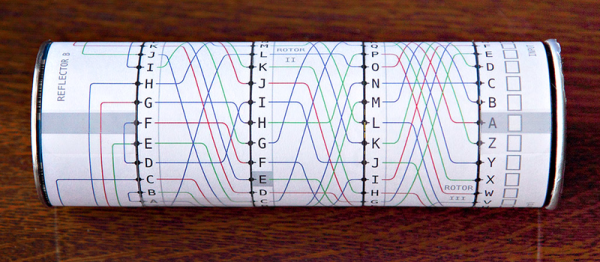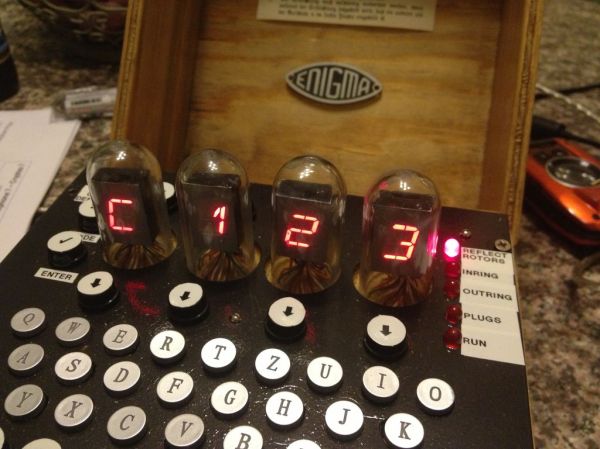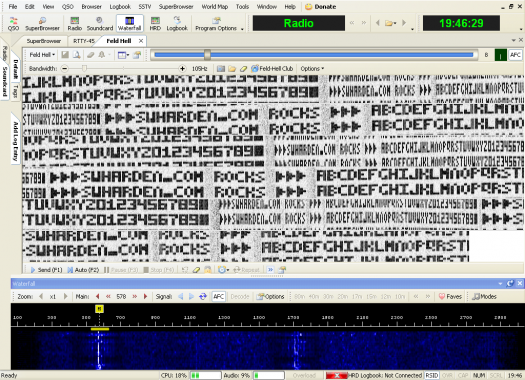It was high-tech encryption for an important period of time in the mid-1940s, so perhaps you can forgive us our obsession with the Enigma machine. But did you know that you can make your very own Enigma just using some cut out paper strips and a tube to wrap them around? Yeah, you probably did. But this one is historically accurate and looks good too!
If you just want to understand how the machine worked, having a bunch of paper rolls in your hands is a very intuitive approach. Alan Turing explained the way it worked with paper models too, so there’s no shame there. With this model, you can either make the simple version with fixed rotor codes, or cut out some extra slip rings and go all out.
What is it with Hackaday and the Enigma machine? Just last month, we covered two separate Enigma builds: one with a beautiful set of buttons and patch cables, and another in convenient wrist-watch format. In fact, one of our first posts was on a paper Enigma machine, but the links are sadly lost to bitrot. We figure it’s cool to repeat ourselves once every eleven years. (And this one’s in color!)


















